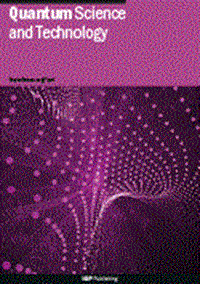经典输运问题量子模拟的改进振幅放大策略
IF 5
2区 物理与天体物理
Q1 PHYSICS, MULTIDISCIPLINARY
引用次数: 0
摘要
经典流体的量子模拟通常涉及使用概率算法,该算法以所选量子态振幅的形式对动力学结果进行编码。然而,在大多数情况下,振幅概率太低,无法有效地使用这些算法,从而阻碍了量子模拟的实际可行性。遗忘振幅放大(OAA)算法通常作为解决这一问题的一种方法,但由于其适用性仅限于幺正动力学,对于大多数经典问题都无济于事。在本文中,我们分析地表明,当应用于非酉动力学时,OAA会导致量子态的畸变和伴随的量子更新误差。我们提供了这种误差的解析上界,作为动力学非统一程度的函数,我们对一个平流-扩散-反应方程的量子模拟进行了测试,平流-扩散-反应方程是科学和工程中主要相关的输运问题。最后,我们还提出了一种放大策略,有助于减轻失真误差,同时仍然确保提高成功概率。本文章由计算机程序翻译,如有差异,请以英文原文为准。
Improved amplitude amplification strategies for the quantum simulation of classical transport problems
The quantum simulation of classical fluids often involves the use of probabilistic algorithms that encode the result of the dynamics in the form of the amplitude of the selected quantum state. In most cases, however, the amplitude probability is too low to allow an efficient use of these algorithms, thereby hindering the practical viability of the quantum simulation. The oblivious amplitude amplification (OAA) algorithm is often presented as a solution to this problem, but to no avail for most classical problems, since its applicability is limited to unitary dynamics. In this paper, we show analytically that OAA when applied to non-unitary dynamics leads to a distortion of the quantum state and to an accompanying error in the quantum update. We provide an analytical upper bound of such error as a function of the degree of non-unitarity of the dynamics and we test it against a quantum simulation of an advection-diffusion-reaction equation, a transport problem of major relevance in science and engineering. Finally, we also propose an amplification strategy that helps mitigate the distortion error, while still securing an enhanced success probability.
求助全文
通过发布文献求助,成功后即可免费获取论文全文。
去求助
来源期刊

Quantum Science and Technology
Materials Science-Materials Science (miscellaneous)
CiteScore
11.20
自引率
3.00%
发文量
133
期刊介绍:
Driven by advances in technology and experimental capability, the last decade has seen the emergence of quantum technology: a new praxis for controlling the quantum world. It is now possible to engineer complex, multi-component systems that merge the once distinct fields of quantum optics and condensed matter physics.
Quantum Science and Technology is a new multidisciplinary, electronic-only journal, devoted to publishing research of the highest quality and impact covering theoretical and experimental advances in the fundamental science and application of all quantum-enabled technologies.
 求助内容:
求助内容: 应助结果提醒方式:
应助结果提醒方式:


